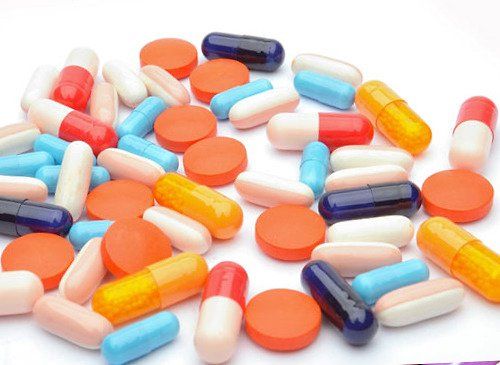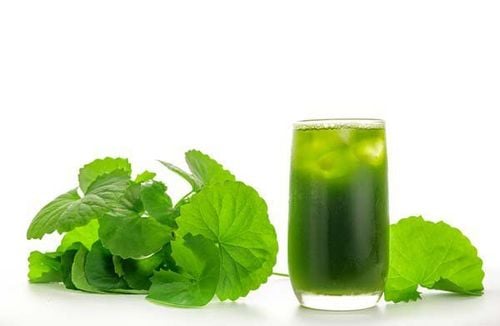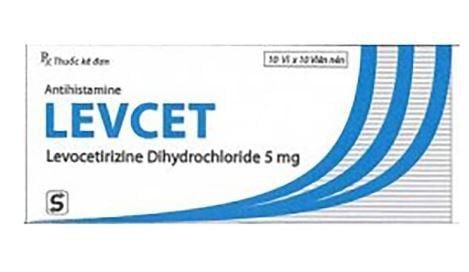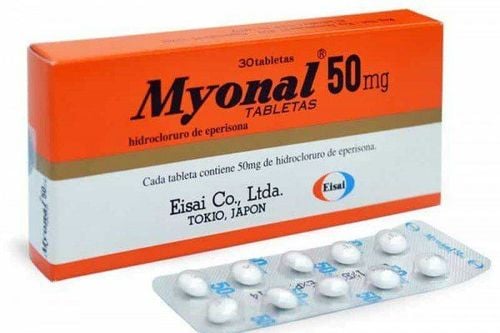This is an automatically translated article.
Food allergy is a fairly common condition caused by the immune system misidentifying certain proteins in foods. In fact, it affects about 5% of adults and 8% of children, and these rates are still growing. Therefore, early recognition of the symptoms of an allergic reaction will help the patient to avoid health risks.
1. Food allergy
A food allergy is an immune system reaction that occurs shortly after eating a certain food. Even small amounts of allergenic foods can trigger signs and symptoms related to digestive problems, hives, or swollen airways.
In some people, a food allergy can cause severe symptoms or even a life-threatening reaction called anaphylaxis.
Food allergy is easily confused with a food intolerance reaction. Although unpleasant, a food intolerance is a less serious condition and does not involve the immune system.

Dị ứng thực phẩm
2. Food allergy causes
When you have a food allergy, your immune system mistakenly identifies a food or substance in a food as something that can cause harm to your body. At this point, the immune system triggers cells to release antibodies called immunoglobulin E (IgE) to neutralize the food or allergen (allergen).
The next time you consume a small amount of food that has been recognized by the immune system, the IgE antibody will sense and signal the immune system to release histamine and other substances and enter the blood. These substances will cause allergy symptoms.
In adults, most food allergies are triggered by certain proteins in: shellfish such as shrimp, lobster and crab; or peanuts; pecans; fish. In children, food allergies are often triggered by proteins in: peanuts; nuts; Dairy cows; egg; wheat; soy bean.
2.1. Pollen Food Allergy Syndrome Pollen food allergy syndrome affects people with hay fever. In this condition, certain fruits, vegetables, seeds, and spices can cause an allergic reaction that causes the mouth to tingle. In severe cases the reaction can lead to throat swelling or even anaphylaxis.
Proteins in some fruits, almonds and spices also cause reactions because they are similar to allergenic proteins found in some pollens (cross-reactivity).
Pollen food allergy syndrome may be less severe when the foods that cause pollen allergy syndrome are cooked.
2.2. Exercise-induced food allergies Eating certain foods can make some people feel itchy and dizzy soon after starting exercise. Severe cases may even present with symptoms associated with a rash and anaphylaxis. Therefore, do not eat for a few hours before exercising and avoid using foods that can cause this condition.
2.3. Food intolerances and other reactions Food intolerances or reactions to substances ingested can cause some of the same signs and symptoms as a food allergy such as nausea, vomiting, rat withdrawal and diarrhea.

Nôn là một trong những triệu chứng của dị ứng thực phẩm
Depending on the type of food intolerance, you can eat small amounts of food without having an allergic reaction. Conversely, if you are allergic to a food, even a small amount of the food ingested can cause an allergic reaction.
One of the difficult problems in diagnosing food intolerance is that in some people there are sensitivities not only to the food itself, but also to substances or finished products used in food preparation. .
Common conditions that can cause symptoms mistaken for a food allergy:
Lack of enzymes needed to fully digest a food. You may not have enough enzymes to digest certain foods. For example, not enough lactase enzyme. A lack of this enzyme can reduce the ability to digest lactose - the main sugar in dairy products. Symptoms of lactose intolerance can include flatulence, intestinal cramps, and diarrhea. Food poisoning . Sometimes food poisoning can resemble an allergic reaction to food. For example, bacteria in spoiled tuna or other fish can produce toxins that cause harmful reactions in the body. Sensitivity to food additives. In some people there will be gastrointestinal reactions and other symptoms after eating certain food additives. For example, sulfites used in the preservation of dried fruit, canned goods, and wine can trigger asthma attacks in susceptible individuals. Histamine toxicity. In some fish such as tuna and mackerel, if not stored properly, they are likely to be colonized by bacteria and contain high levels of histamine that cause symptoms similar to food allergies. . However, this is not a food allergy but rather due to histamine poisoning or Japanese mackerel poisoning. Celiac disease. Although celiac disease is thought to be a gluten allergy, it does not cause symptoms of anaphylaxis. Like a food allergy, it involves an immune system response, but this response is unusually more complex than a common food allergy. This chronic digestive condition is triggered by eating gluten - a protein found in bread, pasta, cookies and foods containing ingredients such as wheat, barley or rye.
If you have celiac disease and eat foods containing gluten, an immune response occurs that damages the surface of the small intestine and results in the inability of the intestine to absorb certain nutrients.
3. Risk factors for food allergies
Common food allergy risk factors include:
History. You are at risk for a food allergy if you have asthma, eczema, hives, or a hay fever allergy. And these diseases are often caused by a family history of the disease, and the rest are also at high risk of developing the disease. Other allergies. If you have ever had an allergic reaction to one food, you may be at increased risk of being allergic to other foods. Similarly, if you suffer from various types of allergic reactions such as hay fever, eczema, etc., your risk of having a food allergy is very high. Year old. Food allergies are common in children, especially toddlers and babies. As you age, you get older, your digestive system is perfected, so your body is less able to absorb the food or ingredients that cause an allergy. Asthma . Asthma and food allergies often occur together. When they work together, symptoms can become severe. Some of the risks that may increase the development of an anaphylactic reaction include:
Having a history of asthma. Children or adolescents. Delay the use of adrenocortical hormone for the treatment of food allergy symptoms. No rash or other skin symptoms

Hen suyễn thường xảy ra cùng dị ứng thực phẩm
4. Food allergy symptoms
For some people, an allergic reaction to a food may not be serious, but for others it can be life-threatening. Food allergy symptoms usually develop within minutes to two hours of eating that food.
Signs and symptoms of a common food allergy include:
Itching in the mouth Rash, itching or eczema Swelling of the lips, face, tongue and throat or other parts of the body Wheezing, stuffy nose or difficulty breathing Abdominal pain, diarrhea, nausea and possible vomiting Dizziness and fainting Anaphylaxis In some people, a food allergy can trigger a serious allergic reaction known as anaphylaxis. This can cause life-threatening signs and symptoms such as:
Constriction and tightening of the airways Throat swelling and a feeling of suffocation making it difficult to breathe Shock with severely reduced blood pressure Pulse palpitations Dizziness and possible loss of consciousness These signs can cause coma or even death. Therefore, emergency treatment for this situation is extremely important.
5. Complications due to food allergies
Complications from food allergies include:
Anaphylaxis. This is a serious allergic reaction that can be life-threatening. Atopic dermatitis (eczema). Food allergies can cause skin reactions, such as eczema.
6. Some food allergy prevention measures
The best way to prevent a food allergic reaction is to know and avoid foods that can cause signs and symptoms. For some people this is just an inconvenience, but for others it is a huge difficulty. In case you know you have a food allergy, there are a few steps you can take to prevent an allergic reaction:
You need to know what foods you are eating and drinking. Therefore, you should carefully read the label on food ingredients before using. If you have a severe reaction, you can wear a medical alert bracelet or necklace to signal to others that you have an allergic reaction to a food. See and talk to your doctor about emergency adrenocortical hormone prescriptions. You may need to carry your adrenocorticotropic hormone auto-administered medication (Adrenaclick, EpiPen) at all times if you are at risk for a severe allergic reaction. Be careful when eating at restaurants. In this situation, you should talk to the restaurant owner or chef about your food allergy. And you need to be absolutely sure that the food you order does not contain ingredients that cause you allergies.
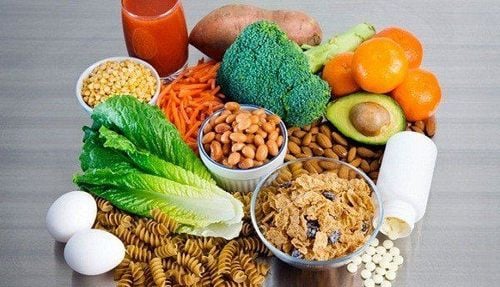
Bạn nên biết rõ những thực phẩm sử dụng
7. Some common foods cause allergies
Dairy cows . Cow's milk allergy mainly affects children under the age of three. Being diagnosed with an allergy to cow's milk means avoiding all milk and dairy products. Egg. Egg white allergy is quite common. Tree nuts. Tree nut allergy is one of the most common food allergies. It is often associated with severe allergic reactions. Peanut. Peanut allergy is a serious condition Shellfish such as shrimp, crab, oysters, mussels... The trigger for an allergic reaction from these foods is tempomyosin. Wheat. Wheat allergy can be caused by sensitization to any of the proteins in wheat. Soy bean. Allergic reactions will be triggered by the proteins in soy and soy products. Vinmec International General Hospital is one of the hospitals that not only ensures professional quality with a team of leading doctors, modern equipment and technology, but also stands out for its examination and consulting services. and comprehensive, professional medical treatment; civilized, polite, safe and sterile medical examination and treatment space.
Please dial HOTLINE for more information or register for an appointment HERE. Download MyVinmec app to make appointments faster and to manage your bookings easily.
Articles refer to sources: mayoclinic.org, healthline.com




